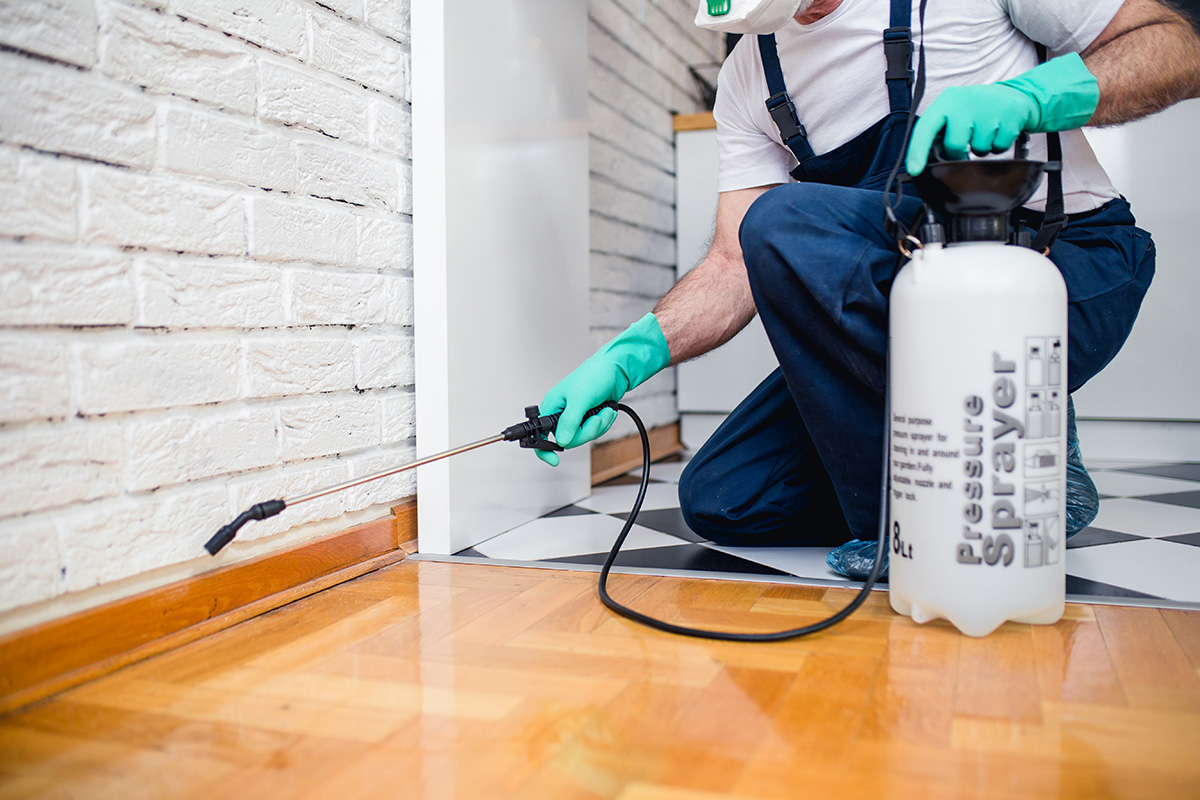A1 Bed Bug Exterminator Charlotte - Specialized Bed Bug Elimination
A1 Bed Bug Exterminator Charlotte - Specialized Bed Bug Elimination
Blog Article
Bed Pest Therapy Failure: Contrasting Chemical Vs. Non-Chemical Solutions
In the realm of parasite control, particularly when handling the persistent concern of bed insects, the selection between chemical and non-chemical treatment solutions can be a crucial one. Both techniques offer unique advantages and downsides, affecting elements such as performance, safety factors to consider, and general cost. By checking out the nuanced details of each approach, a more clear understanding of which path to seek in dealing with a bed pest infestation can be obtained.
Effectiveness of Chemical Therapies
Chemical treatments for bed insect infestations have been commonly recognized for their powerful and quick effectiveness in eradicating these bugs. When considering the effectiveness of chemical treatments, it is critical to comprehend that they can give a quick and complete solution to a bed bug trouble.
Moreover, chemical treatments have the benefit of supplying recurring effects, indicating that they can remain to get rid of bed bugs also after the initial application. This residual activity is particularly helpful in combating any kind of possible re-infestations. Additionally, the quick activity of chemical therapies can bring relief to individuals dealing with serious bed insect problems, allowing them to reclaim control of their living areas quickly.
Safety And Security Interest In Chemical Solutions
One crucial facet that requires mindful consideration when utilizing chemical services for bed insect treatment is making sure the safety and security of residents and the atmosphere. Exposure to certain chemicals used in bed pest treatments can lead to breathing problems, skin inflammation, or other damaging reactions, especially in people with pre-existing problems or sensitivities.
Furthermore, the ecological impact of chemical remedies is an additional considerable consideration. Some pesticides utilized in bed bug treatments might be unsafe to beneficial insects, wildlife, and communities if they seep right into the soil or water supply. It is necessary to utilize chemical treatments deliberately, complying with safety standards, and taking into consideration less toxic choices to alleviate these threats and make sure the risk-free and effective monitoring of bed insect problems.
Advantages of Non-Chemical Strategies
Taking into consideration the prospective safety problems and environmental influence related to chemical services for bed pest treatment, discovering non-chemical approaches offers an appealing alternative with a number of distinctive benefits. Non-chemical approaches use a more secure choice for houses, particularly those with family pets, people, or children conscious harsh chemicals. These approaches get rid of the dangers of direct exposure to toxic compounds, minimizing the possibility for negative wellness effects. Moreover, non-chemical therapies are ecologically pleasant, as they do not add to air or water air pollution, making them a lasting selection for insect control.
In addition, non-chemical options can be effective in targeting bed bugs, consisting of hard-to-reach locations where chemical treatments might not pass through - A1 pest control services charlotte. Methods such as warm treatment, vacuuming, steam cleansing, and mattress encasements give thorough removal without the use of hazardous chemicals.
Limitations of Non-Chemical Treatments

Furthermore, non-chemical treatments commonly require numerous applications to achieve successful obliteration. This can be time-consuming and may not always assure total removal of all bed pests and their eggs, specifically in covert or hard-to-reach locations.
In addition, the success of non-chemical treatments heavily relies A1 bed bug treatment in charlotte on proper execution and thoroughness, which can be challenging for individuals without expert know-how. Inadequate application of non-chemical methods may result in incomplete elimination, resulting in consistent invasions and the need for added therapies.
As a result, while non-chemical therapies have their advantages, it is important to recognize these constraints and consider them when determining the most effective technique for handling bed insect problems.
Cost Contrast: Chemical Vs. Non-Chemical Options
Provided the restrictions associated with non-chemical therapies, an important element to examine in the context of bed pest administration is the cost comparison in between chemical and non-chemical options. In comparison, non-chemical therapies like heat therapy or vapor can be more costly, with costs ranging from $1,000 to $6,000 for an entire home. While the initial expense of chemical treatments might appear reduced, multiple therapies may be called for to totally remove the infestation, potentially increasing the total expense.
Verdict

Considering the possible safety concerns and environmental effect connected with chemical solutions for bed insect therapy, exploring non-chemical methods offers an appealing option with a number of unique benefits.Offered the restrictions connected with non-chemical treatments, a crucial facet to assess in the context of bed insect management is the price comparison in between chemical and non-chemical alternatives. In comparison, non-chemical treatments like warmth treatment or steam can be a lot more expensive, with costs ranging from $1,000 to $6,000 for an entire home. While the initial expense of chemical therapies may appear lower, multiple treatments may be called for to completely get rid of the problem, potentially boosting the total expense.In final thought, when contrasting chemical and non-chemical bed bug treatment alternatives, it is important to consider effectiveness, safety and security, benefits, constraints, and price.
Report this page